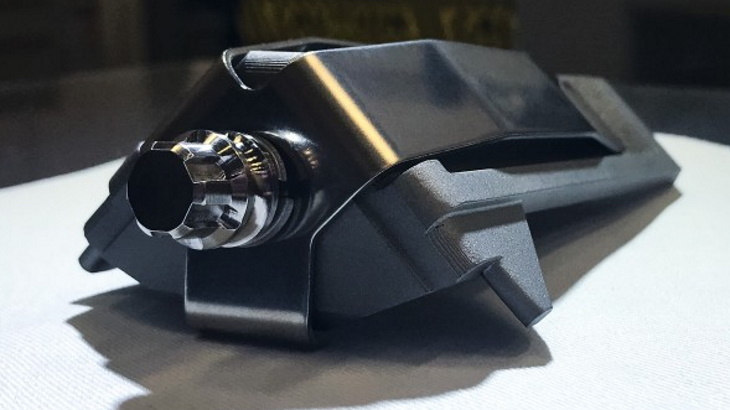Four first-of-a-kind 3D-printed fuel assembly channel fasteners have been installed and are now under routine operating conditions at unit 2 of the Tennessee Valley Authority's (TVA's) Browns Ferry nuclear power plant in Alabama. The components were produced at the US Department of Energy's (DOE's) Manufacturing Demonstration Facility at the Oak Ridge National Laboratory (ORNL).

Four 3D-printed components, like the one shown here, were installed at Browns Ferry 2 (Image: Framatome)
Channel fasteners secure the fuel channel to the fuel assembly. These have traditionally been fabricated from castings and require precision machining.
The components installed at Browns Ferry 2 were printed at ORNL using additive manufacturing techniques - also known as 3D printing - in which material is deposited in layers, following a computer-designed model, to form precise shapes without the need for later carving or machining.
"The channel fasteners' straightforward, though non-symmetric, geometry was a good match for a first-ever additive manufacturing application for use in a nuclear reactor," ORNL said.
The parts were installed on Atrium 10XM boiling water reactor fuel assemblies at Framatome's nuclear fuel manufacturing facility in Richland, Washington. These were installed within Browns Ferry 2 during a planned outage which ended on 22 April. The fasteners will remain in the reactor for six years with regular inspections during that period.
The 3D-printed components were developed in collaboration with TVA, Framatome and the DOE Office of Nuclear Energy–funded Transformational Challenge Reactor (TCR) programme based at ORNL.
The TCR programme was launched in 2019 with the goal of designing, manufacturing and operating a demonstration additively manufactured microreactor by 2023. The current focus of the programme is to further mature and demonstrate industry-ready technology informed by advanced manufacturing, artificial intelligence, integrated sensing and deployment of a digital platform for informed certification of components.
"Deploying 3D-printed components in a reactor application is a great milestone," said Ben Betzler, ORNL's TCR programme director. "It shows that it is possible to deliver qualified components in a highly regulated environment. This programme bridges basic and applied science and technology to deliver tangible solutions that show how advanced manufacturing can transform reactor technology and components."
"Collaborating with TVA and ORNL allows us to deploy innovative technologies and explore emerging 3D printing markets that will benefit the nuclear energy industry," said John Strumpell, manager of North America Fuel R&D at Framatome. "This project provides the foundation for designing and manufacturing a variety of 3D-printed parts that will contribute to creating a clean energy future."
Researched and written by World Nuclear News